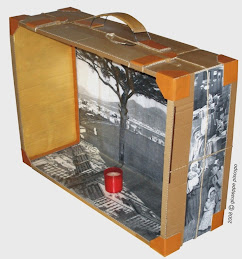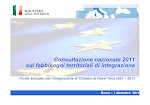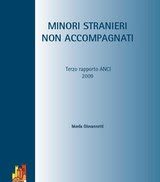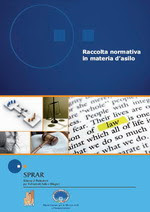Ann Arbour 30th September 2005
Coping with Immigration:
American and European Experiences and Lessons
MANAGING FLOWS AND BORDER ENFORCEMENT
Before introducing the issues of discussion, I’d like to present to you an image related to the themes. (it’s a beautiful image from Italy, even if it’s not the image of Italian immigration policy..)
It’s the image of the fascinating city of Venice, a unique experience of cohabitation between man and the sea. The sea has been such precious as dangerous at same time: Venice has been open to the sea, becoming one of most powerful cities in Mediterranean, because sea brought opportunities and richness. But especially in the last years the tide is becoming a higher risk.
It could be the same case of immigration flows, often such difficult to manage.
But actually in Venice, in order to prevent the danger of tide, there is the building of an innovative public work, called MOSE, useful to respond quickly and flexibly to the tide.
There aren’t permanents barrier that isolate the city but an invisible hydraulic system, normally under the sea surface, that can be opened and closed as necessary: it’s made of containers fixed to seabed, normally full of water, that can be empty pumping air in: in this way they come up to constitute a calibrated and temporary barrier and regulation system.
I’d like to stimulate the discussion moving from the following question:
Do the laws and policies of the EU and US provide an appropriate framework for managing immigrants flows?
The current legal frameworks, both in US and EU, have produced a high presence of immigrants workers who are or have been unauthorized to reside and work in the destination countries: so it was often necessary to introduce periodical regularizations.
Therefore we should reflect on the effects occurred if the supply of visas doesn’t meet the demand of them.
Often the border enforcement seems an expensive and insufficient answer to the problem, most of all if the immigration rules aren’t such flexible as is requested by labour marked needs.
These are the proposals and the instruments actually considered regarding the immigration policies. We should reflect on the best mix of them, considering the efficacy, the benefits and the drawback of each.
- to enforce the border control
(Expensive and not resolutive; crucial the intergovernmental cooperation)
- to improve the removals
(Expensive and belated countermeasure)
- to support periodic regularizations
(It should contribute to clarify underground realities, but stimulates irregularity)
- to close the welfare access to unauthorized
(A denial to the fundamental rights of the person)
- to contrast the smuggling and criminal organizations,
(Essential the intergovernmental cooperation)
- to develop international agreement with sending and transit countries
(It has been particularly efficacious in several cases)
- to combat the illegal employment
(Easier than border control)
- to facilitate the meet between supply and demand - promote temporary work programs
(More flexible)
- To develop trade and development cooperation with countries of origin etc.
(Strategic and elaborate answer)
Overview : EU common immigration policy
The Member States of EU have agreed to develop a common immigration policy at EU level.
In 1999, the Treaty of Amsterdam gave the EU competence for immigration. Immigration was therefore no longer a matter for inter-governmental coordination but for actions to be adopted by the Council of Ministers of the EU based on proposals from the European Commission or, until 2004, the Member States.
In other words, the European Commission shares the right to initiate proposals with Member States in this area until 2004. (See the Title IV of the “Treaty establishing the European community” – “Visas, Asylum, Immigration And Other Policies Related To Free Movement Of Persons”- concerning the enforced cooperation between states )
The European Commission has made proposal for develop this policy in order to establishing a common legal framework concerning the conditions of admission and stay of immigrants, and coordinating a procedure to encourage the gradual convergence of policies.
The Commission believes that the admission of economic migrants is the cornerstone of any immigration policy and that it is therefore necessary to address it at European level in the context of the progressive development of a coherent Community immigration policy.
Objective
- One of fundamental objective of EU, as stated by constitutional treaty, is to constitute an “area of freedom, security and justice”.
- Free movement of person
- To develop economy and competitiveness
- To combat the crime
Principle
- Comprehensive approach to the management of migratory flows so as to find a balance between humanitarian and economic admission
- Fair treatment for third-country nationals
- Partnership with countries of origin
- Common policy for asylum
Legal set on:
- Visa,
- EU external border policy,
- Schengen area,
- list of countries for which Visa are requested,
- Judicial cooperation in civil and criminal matters
Between 2010 and 2030, at current immigration flows, the decline in the EU-25’s working age population will entail a fall in the number of employed people of some 20 million.
Recognising the impact of demographic decline and ageing on the economy, the Commission has highlighted the need to review immigration policies and flow management in order to develop competitiveness and achieve the fulfilment of the Lisbon objectives.
It’s fully recognised that decisions on the numbers of economic migrants to be admitted in order to seek work are a matter for the Member States.
Given that access of third country nationals to the labour market is a highly complex issue, the Commission considers that a successfully operating Community policy in this field can only be put in place progressively, in order to facilitate a gradual and smooth move from national to Community rules.
EU legislation on the admission of economic migrants should therefore be conceived as a “first step legislation” and lay down certain common definitions, criteria and procedures, while at the same time leaving to the Member States to respond to the specific needs of their labour markets.
As stressed in several Commission communications (2004-412) and in the Council Conclusions on migration and development of 19 May 2003, a successful EU policy on economic migration requires that migration flows are managed in cooperation with the countries of origin and transit, taking into account their reality and needs.
The measures taken must be accompanied by strong policies to integrate migrants admitted.
“Community preference” principle
Before admitting a third-country worker, Member States require proof that no one already part of the domestic labour market can fill the vacancy concerned (the vacancies in a Member State cannot be filled by national and Community manpower or by non-Community manpower lawfully resident on a permanent basis in that Member State). Some Member States admit special categories of workers – e.g. highly skilled or workers in sectors/occupations where shortages already exist – through special schemes such as fast track procedures, green cards, etc.
How effective are coordination and division of labour between different governmental levels: in EU between Brussels national capital and local authorities, in US between the federal and state governments?
What is the status quo of immigration policies integration process in EU? What are the prospective in the short and long term?
What are the best solutions to be shared?
In conclusion we should consider how the immigration issues are impacting on public opinion and national policies:
In the US and UE debate on immigration, there is a comprehensive approach to different interests? Which are the most underlined?
How significant are immigration issues expected to be in the next round elections? There is a deep division in public opinion and politics programs on immigration policies or a widespread difficulty to manage the phenomenon?
How deep the terrorist threat and growing immigration pressure have changed approach to immigration of US, the country of opportunities, integration and melting pot? What about the reaction of Italy that saw a great increase of immigrants in last decade?
What has been, is and is likely to be the impact of terrorist acts on the formulation of laws?



















